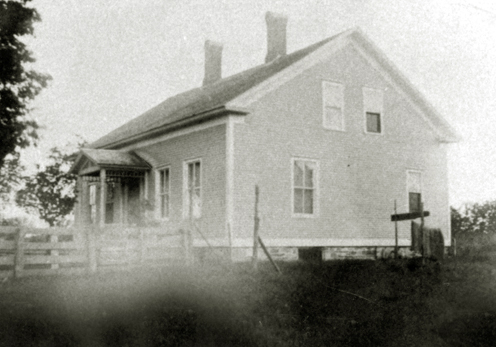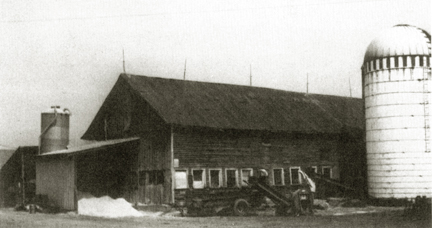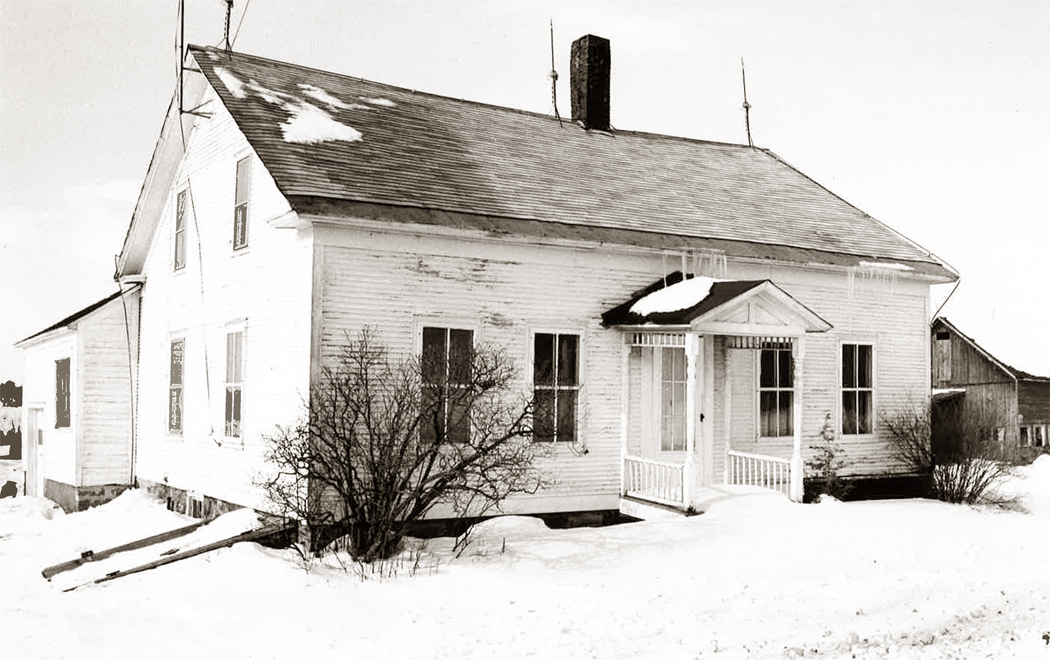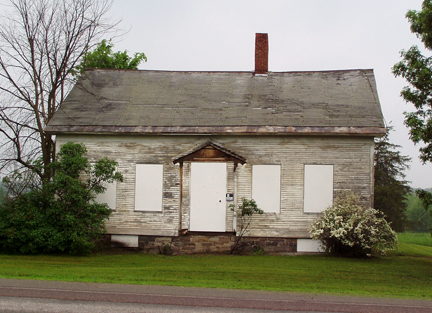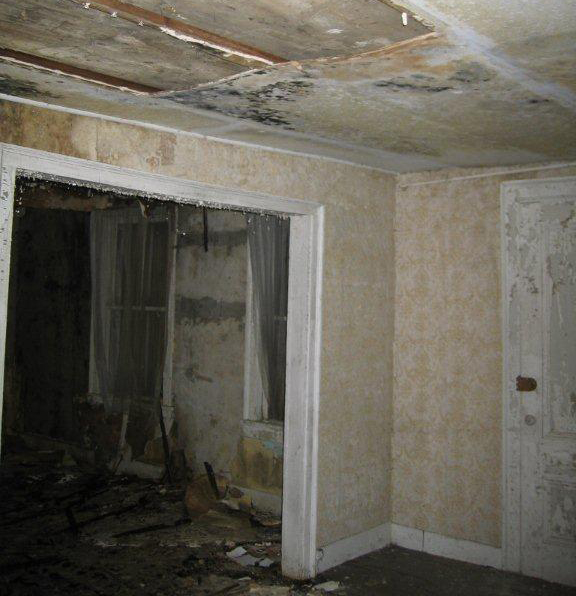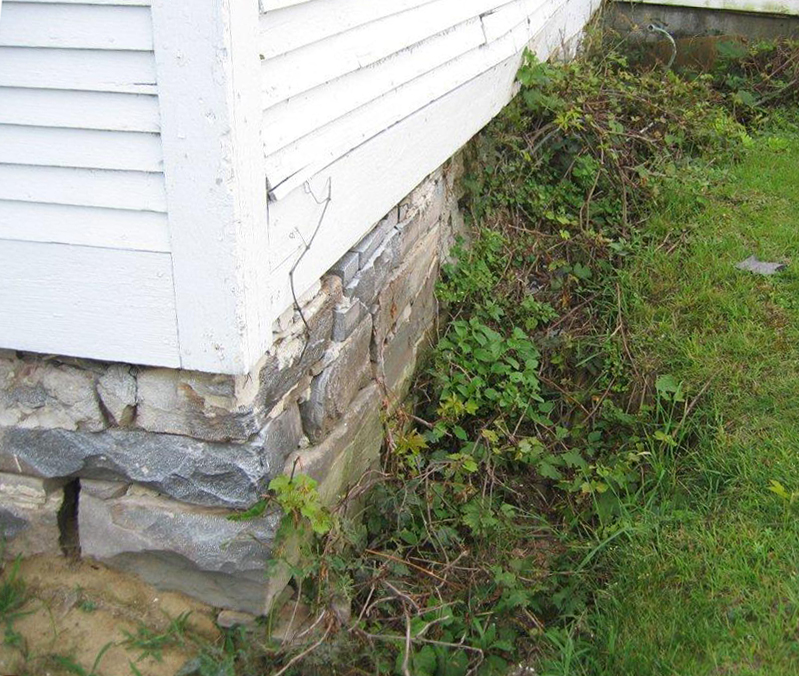History of the General Stannard House
General George Stannard owned this house and worked here. He lost his right arm in the Battle of Fort Harrison in 1864. He resigned from the Army in 1866 and purchased this farm in Milton, Vermont. He built a barn that could be run by a one-armed man.
The General Stannard House is a nationally important resource tied to the American Civil War. To a man who changed the course of American history, a lack of action would be more challenging to absorb, we suspect, than is the challenge confronted by the stakeholders working to preserve this piece of history. We are well on our way to properly honoring and the Vermonters' enormous contribution to the American Civil War, and with your help we will accomplish our goal of relocating and restoring the house as an educational attraction in downtown Milton, with a Stannard Memorial Park at the original house site.
Below is the General Stannard House and the Stannard-Sanderson farm history:
The General Stannard House is a nationally important resource tied to the American Civil War. To a man who changed the course of American history, a lack of action would be more challenging to absorb, we suspect, than is the challenge confronted by the stakeholders working to preserve this piece of history. We are well on our way to properly honoring and the Vermonters' enormous contribution to the American Civil War, and with your help we will accomplish our goal of relocating and restoring the house as an educational attraction in downtown Milton, with a Stannard Memorial Park at the original house site.
Below is the General Stannard House and the Stannard-Sanderson farm history:
|
In the 1870 census, Stannard's primary residence is listed as Burlington, at which he shared time with this house and farm until he sold it in 1872. He eventually moved to Washington, DC. The Raymond Sanderson family owned and farmed the land until 1988, when the Greater Burlington Industrial Corporation (GBIC) bought the land for further development. The State of Vermont designated the site on its Historic Register in April 1980. The barns were burned as a training exercise for the Milton Fire Department in 1989. Various ideas for use of the home were floated, including a new site of the Milton Historical Museum in the 1990s, office space, or razing the structure to build new businesses. Local and state approvals needed were not satisfied, stakeholders did not proceed, and the house sat vacant. Local interest continued. At Milton's Civil War Soldiers’ Monument Rededication in 2004, historian author and keynote speaker Howard Coffin emphasized the home’s historical significance and said “It should be saved.” Local middle school students August Cyr, Alison Joseph and Mae Kemsley took great interest in Stannard's importance and in 2005-2006, generated great awareness to repair the house. They met with then-owner GBIC multiple times and patched, painted, and fundraised to save the house, but various permitting hurdles and other commitments stalled that effort. Finally, in 2013, Milton Select Board members noted its decay and the unfavorable impression it made on visitors’ entry to the Town of Milton. Thus began renewed interest from our community in saving the house. Timeline1820 George Jerrison Stannard is born in Georgia, Vermont.
c. 1840 House is built. c. 1840–1849 Dr. Calvin Deming (1774-1849) lives in and practices medicine at the house. Deming was the first Secretary of the Vermont Medical Society, and served as West Milton Postmaster in 1837. 1866 Civil War Major General George Stannard purchases the house and farm. Has a barn built to accommodate needs of a one-armed man. Raises horses and beef cows on the farm, and runs a brick-making foundry in St. Albans. 1872 General Stannard sells property and relocates to Washington, DC. 1886 Stannard passes away. 1950s Back garage is added off back left corner of house. Mid-1900’s - 1980s Raymond Sanderson home and farm. 1980 Property is placed on Vermont State Historic Register. 1988 Raymond Sanderson passes away, Greater Burlington Industrial Corporation (GBIC) purchases property. Condition Assessment is performed. Barn is burned for Milton Fire Dept. training exercise. House sits vacant. 1995 After the town moves out of Clark Memorial Building to Bombardier Road, the Milton Historical Society investigates the house as possible museum site. 1990s - early 2000s Several businesses express interest in repairing and using the property. State and town regulations and zoning prevent any deals from taking place. 2004 At Milton’s Civil War Soldiers’ Monument Rededication, keynote speaker Howard Coffin states that due to its historical significance, the house “should be saved”. 2005-2006 Milton Middle School students August Cyr, Alison Joseph and Mae Kemsley raise awareness of General Stannard and the historical significance of the house, modest cosmetic repairs are done, discussion of renovation. Kenneth Adams Construction estimates full repair at $400-500K. Lead paint, cost, vision, halt project. 2011 Miller Realty Group purchases house and surrounding property and builds Gardener’s Supply distribution center directly behind the house, with entrance alongside Stannard House. Nov. 2012 Conversation re-opened with Frank Cioffi of GBIC about what can be done to save the house. Little enthusiasm and slow to keep the discussion going, which now needs to include new property owner Bob Miller. June 2013 Milton Town Manager Brian Palaia sends email to the Milton Historical Society stating that a Selectboard member wants something done about the Stannard House, whether it is restoration, demolition with a historic marker, or another solution. The concern is that deterioration will continue at this gateway to our community, and this lack of care does not contribute to a positive visual impression when entering town. Asks whether the Society and others would like to weigh in and help. The answer is Yes. August 2013 A group of about 20 people enter the house to visually survey its condition. Owner Bobby Miller gives his verbal support to interested people rehabilitating the house for a public use. December 2013 Discussion is opened with The Preservation Trust of Vermont (PTVT); Field Rep Ann Cousins tours the house and directs us to their Condition Assessment Program. May 2014 With matching grants from PTVT and the Town of Milton, a new Condition Assessment is performed to determine if the house can be saved. July 2014 Meet with Colchester Historical Society at Airport Park Log Schoolhouse to discuss their restoration project completed in 2007; General Stannard House Committee is formed. Sept 2014 MHS fiscal sponsorship approved, fundraising begins, Help Save My House sign goes up. Winter 2014 Negotiations w/ Miller – lease vs. subdivide, how much land, where to access. Miller has engineers draw up 100 x 70’ lot. January-May 2015 UVM Engineering Senior Capstone Project – one of 12 community projects. Increased our knowledge base and options. April 2015 Official proposal to Town Select Board to accept donation of house passes unanimously. Committee assumes all responsibility for restoration funding. Summer 2015 Begin process of developing site plan for restoration in place. Roger Dickinson, Milton resident and Miller’s engineering firm, assists GREATLY. Sketch site plan approval in August. AC Hathorne Co. offers donated installed roof when ready after May 2015 Burlington Free Press article Winter 2015-16 Town DRB – Subdivision and Conditional Use approved in February. March 2016 Town votes for and buys Ruth Bombardier property. May 2016 Town Manager Donna Barlow-Casey recommends house move to Bombardier Property – best sustainable use. (PTVT advice) Stop restore in place process to explore. We agree. Bob Miller is on board. Remainder of 2016 Deliberate move prospect, poor negotiation process with select board; would have done differently. We resume quest toward property transfer (future activity hinges on it); February subdivision approval lapses (plats not filed), we re-apply and resume VDHP and Act 250 approval process. 2017
Early 2018
Spring/Summer 2018
September 2018
December 2018
The General Stannard House is what remains of the farm and living space of the man “who, at Gettysburg, may well have changed the course of world history when he ordered his 2nd Vermont Brigade to attack the right flank of Pickett’s Charge.” General George Stannard, born in Georgia, VT, was this man. His biographer, George Maharay, wrote “Had Pickett’s Charge succeeded and the war ended, North and South might have become two nations. That didn’t happen and the Union was preserved.” If “Gettysburg provides the climax of the war, then the climax of the climax, the central moment of our history, must be Pickett’s Charge.” Further details on the house's history to come. |
The barn that General Stannard had built in the late 1860s
February 1977 - Vermont Division of Historic Preservation photo
June 2006
August 2013
August 2013
May 2014
May 2016
Non-historic garage removal, September 2018
Interior plaster, lath and debris removal, December 2018
|


